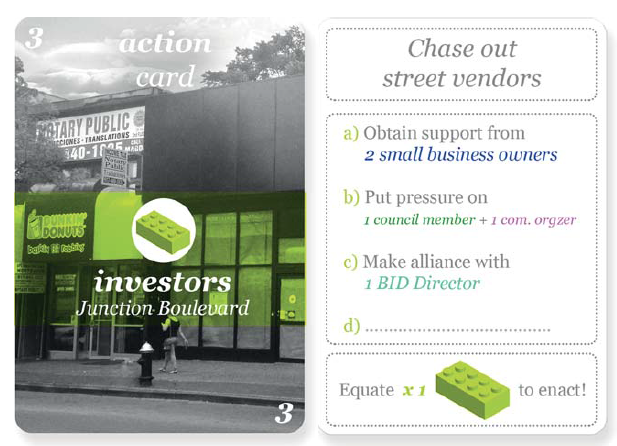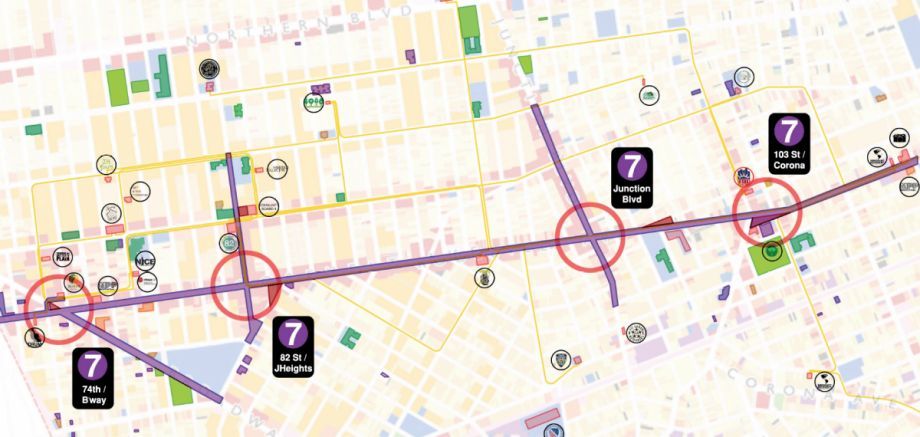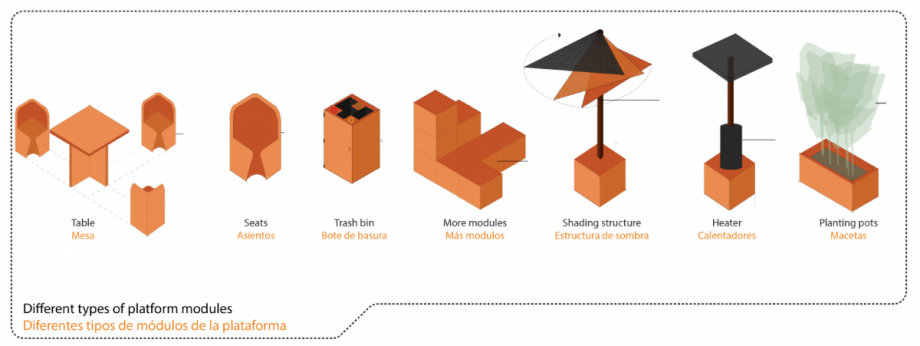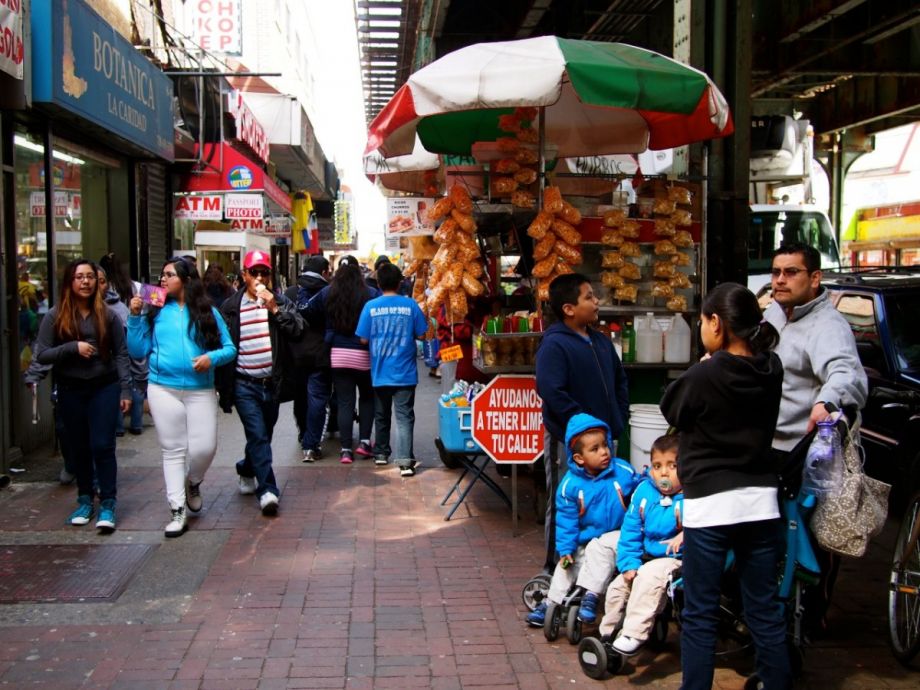In “Fighting for Affordability and Community Character in Queens,” I wrote about how the proposed extension of a business improvement district (BID) into the Jackson Heights and North Corona neighborhoods of Queens, New York has divided the area’s business community.
Supporters of the proposal argue that it would provide a much-needed facelift to the commercial corridor along Roosevelt Avenue and make it cleaner, safer and more business friendly. Opponents argue that the rhetoric of “cleaning up the neighborhood” is an insidious euphemism for another goal: strong-arming low-income residents, street vendors and new immigrant communities out of the neighborhood.
Since I covered the story last summer, the 82nd Street BID, which has been leading the charge to expand, has changed leadership. A new executive director has postponed the counting of ballots cast by local stakeholders last summer in order to meet with more local businesses to draw in more support.
Some business leaders see sanitation, security and economic development benefits in the BID extension, but a strong opposition of residents and entrepreneurs think the BID proposal mischaracterizes existing economic and social practices, as well as making it less affordable to live and do business in Jackson Heights/North Corona.
While the community awaits the final tally of votes that could establish the Jackson Heights-Corona Partnership once and for all, a group of graduate students are presenting a fresh academic take on the issue. In a new exhibit, “Roosevelt Avenue Urbanites,” eight teams from design and urban ecology fields at Parsons The New School for Design and three Italian schools show off their ideas for creating economic opportunities and enhancing street life along Roosevelt Avenue.
The students merged theory and grassroots research; they went out and talked to to local vendors and community groups.
“What I told the students from the beginning,” says Quilian Riano, who led one of the Parsons’ classes spearheading the exhibit, “was that we were going to think about that by looking at existing patterns of use and production — from street vendors to sharing business licenses — and take them as an opportunity to create structures that could rival a BID or be used by a BID, but rethink it completely from within.”
One of the resulting projects gets at some of the existing tensions and power dynamics in the neighborhood. “Agenda Engine!” is a board game that’s played on a miniature version of Roosevelt Avenue. Players can either be XL (as an elected official, BID director or investor) or XS (as a small business owner, community organizer or street vendor).

Game card from Roosevelt Avenue Urbanites project “Agenda Engine!” (Credit: Demetra Kourri, Kartik Amarnath, Masoom Moitra and Mateo Fernández-Muro)
In Phase 1, participants role-play on-the-ground events like the appointment of a new BID director or a mass demonstration, using their XL or XS clout to inform their actions. After the scenario plays out, in Phase 2 players drop their roles and discuss how their actions affected gameplay and try to come up with new, fairer compromises.

Game board from Roosevelt Avenue Urbanites project “Agenda Engine!” (Credit: Demetra Kourri, Kartik Amarnath, Masoom Moitra and Mateo Fernández-Muro)
Another project used sidewalk street vendors as a model for the creation of modular spaces similar to the ones maintained by many business improvement districts. Like BID-maintained public space, they would have furniture, plants and sanitation services.

Modular furniture from Roosevelt Avenue Urbanites project “Negotiating Spade for Negotiation” (Credit: Bernardo Loureiro, Maria Morales and Nadine Rachid)
I asked Riano why BIDs might not be doing the same types of relationship building or outside-of-the-box visioning that the students were able to accomplish.
“I’m not 100 percent sure,” he told me, “but I can imagine that it could be a very logical reason that the structure has been set up to really answer to businesses. … It’s hard to truly pay attention to people.”
New 82nd Street BID Director Leslie Ramos attended a studio presentation of the students’ work in December. She thought the projects were “impressive,” but she has doubts about applicability.
“Their investment on generating ideas was evident. However, their concepts were more ideological than practical,” Ramos says, “not taking into account the local businesses and residents long-term needs and most importantly overlooked the efforts and coordination needed to carry out such ideas.”
Some of the projects provided ideas similar to those we hope to incorporate in our effort to transform Roosevelt Avenue into a more welcoming commercial corridor that highlights the cultural diversity of the area. Currently, we are trying to activate underutilized open spaces by providing cultural and educational events for the community. We will also be seeking ideas on how to make the 1.2 mile-stretch pedestrian friendly.”
Representatives from community organizations were also on-hand for the studio presentations, and although the gathering could have become heated, Riano says, “It wasn’t as contentious as I thought it would be. Once we got over the rhetoric of [whether or not BIDs are democratic] and we had the actual proposals in front of everybody, we were able to show that [students] weren’t necessarily against the BID. But they did ask the questions about what the BID has actually been doing, why it exists, what it is doing that the city and state are not, and if there are any alternatives possible. [Students asked], ‘Is it possible to rethink the BID from within and outside of it?’”
The Equity Factor is made possible with the support of the Surdna Foundation.

Alexis Stephens was Next City’s 2014-2015 equitable cities fellow. She’s written about housing, pop culture, global music subcultures, and more for publications like Shelterforce, Rolling Stone, SPIN, and MTV Iggy. She has a B.A. in urban studies from Barnard College and an M.S. in historic preservation from the University of Pennsylvania.

















